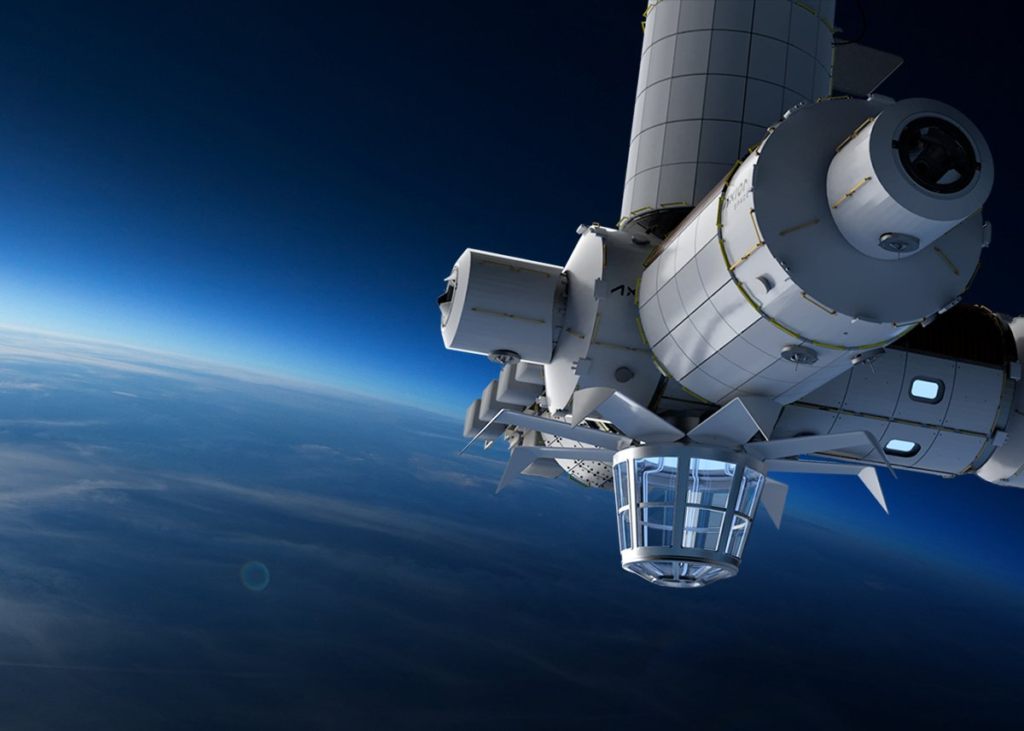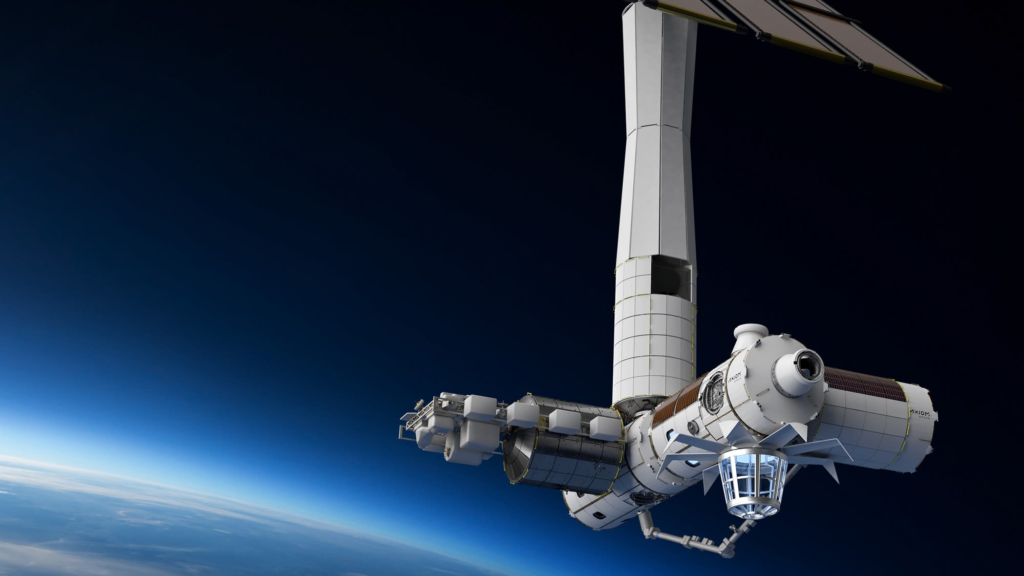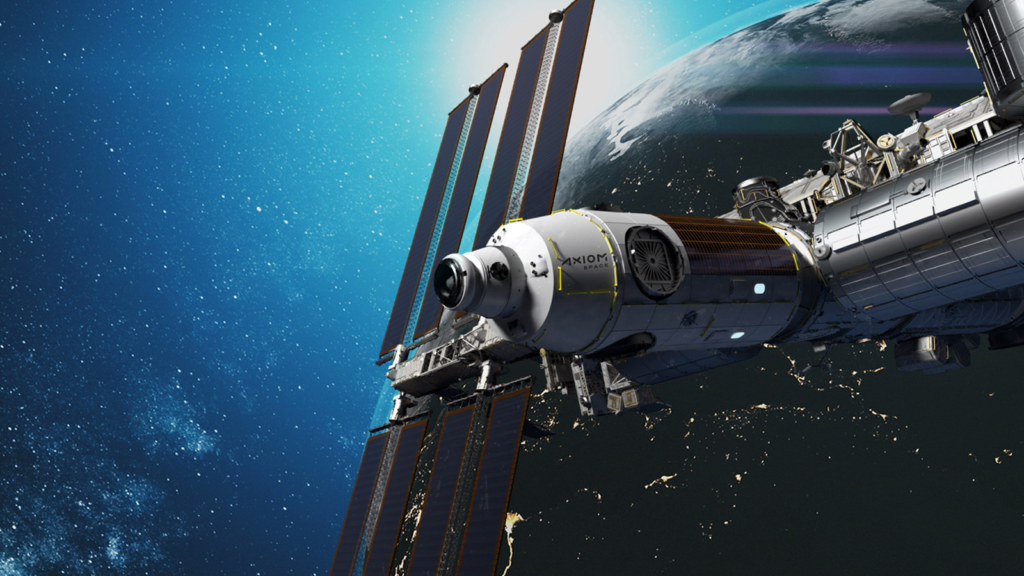
An In-Depth Look At The First Commercial Space Station
Axiom Space is currently in the process of developing and manufacturing segments for the first commercial space station, Axiom Station. With the first segment launch scheduled to happen in 2025, the company is nearing the completion of some of the initial modules. Fortunately for Axiom, this single-segment launch will become operational right away as it will first attach to the International Space Station.
Over the next few years, more modules will launch each with a specific purpose until Axiom Station can officially separate and become its own low Earth orbit destination. However, this is much easier said than done, and in reality, each module plays a very important role in the operation of the full station. This correlates to which segment launches when and why.
Over time Axiom’s plans have changed related to design and timing, by now the company has everything practically set in stone. Here I will go more in-depth into the different modules of Axiom Station, what progress the company has made, how each segment works with the other, and more.
The Modules

Axiom’s first module, named Hab One, is set to launch in late 2025. The module will contain living quarters for four crew members and volume to accommodate research and manufacturing applications. Axiom describes it as the nucleus of future human activity in Earth’s orbit. Each personal crew quarter is equipped with a large Earth-viewing window and touch-screen comms panel. A docking adapter allows visiting vehicles to dock to he Axiom Station. Four radial ports on the hub provide for the addition of future modules and increase the station’s docking capability. As the initial module, this feature is especially important. It will have propulsion, guidance, navigation and station control systems. The first windowed pressurized module is approximately 11 meters long and 4.2 meters in diameter at the widest part.
Next is Axiom’s Hab Two module which is expected to launch in 2026. It will provide quarters for an additional four crew members allowing the station to support up to eight crew. It provides complete ECLSS support, commercial high data satellite communications, and a Canadarm 3-styled Remote manipulator system for the Axiom Station. Axiom offers twice the research volume and features a total of eight radial ports for the docking of visiting vehicles and the addition of further modules. In a lot of ways, this second module is very similar to the first.
Next, you have Axiom’s Research & Manufacturing Facility module, expected to launch no earlier than 2026. It provides access to the unique microgravity environment as a platform to conduct innovative research, product development, process improvement, and manufacturing. The module will launch and arrive at the station with an extension on the end. This extension will be detached from the lab module and moved toward the bottom of Axiom Hab Two. This will be a viewing room with some of the largest windows ever sent into space.
Finally, you have Axiom’s Power Thermal module, which will provide power and thermal capacity equivalent to that of the ISS via solar array to support the station so that Axiom Station will be able to support itself once it disconnects from the ISS. It is expected to launch no earlier than 2027. Specifically, the power module attaches to the zenith port of the Hub, with its solar array producing comparable amounts of power to the ISS. It expands on Axiom Station’s environmental control and life support capabilities, adds additional storage and payload capability, and provides an airlock to be utilized for EVAs by astronauts on board. It’s important to point out however that until AxPT is launched, Axiom Station will be relying on the ISS to help provide power.
As somewhat of an extra, Axiom Space plans to manufacture the SEE-1 module for the British company Space Entertainment Enterprise (or S.E.E.). It is planned to be a six meter spherical inflatable module and to fulfill the purpose of a first entertainment studio in space. SEE-1 is currently expected to launch after AxH1 arrives at the ISS. As far as what will be launching all these modules, there have been no announcements so far as to which rocket will carry the AxS modules into Low Earth orbit. The first module, AxH1, is planned to attach onto the forward port of Harmony. The SEE-1 module is planned to berth on one of the radial ports of AxH1. AxH2 will then berth on the forward port of AxH1. As Axiom Station is a modular space station the modules may be moved to different ports as needed. Something we will likely hear more about in the near future.
Current Progress

The construction of the world’s first commercial space station is underway. Following the completion of preliminary and critical design reviews in collaboration with NASA, Axiom’s partners at Thales Alenia Space began welding and machining activities for the primary structures of Axiom Station’s first module. The first pieces of fabricated flight hardware are beginning to come together, and the assembled module will join the company in Houston soon where they complete final assembly and integration.
Axiom Space is the only company with the privilege of connecting its modules to the International Space Station. This partnership and strategic connection allows Axiom Space to effectively adopt and service the multinational user base of the ISS National Laboratory to seamlessly continue research and manufacturing initiatives. Axiom Station will host people, research and manufacturing that will lead development for numerous industries using techniques that are available only in microgravity. The station will also service the rapidly expanding infrastructure and solutions operating in space and provide an accessible platform for private companies and national governments to continue the research and development of breakthrough innovations.
Focusing more on the building aspect, Axiom Space signed a contract with Thales Alenia Space to manufacture and test the primary structure and the Micrometeoroid & Debris Protection System (or MDPS) for both AxH1 and AxH2. The same company is already in the process of machining the primary structure of AxH1. With the completion of the Manufacturing Readiness Review on September 21, 2021, They were able to begin welding the cone panels of AxH1.
As far as design, eight of the largest windows ever constructed for the space environment will encircle the Axiom Earth Observatory, allowing Axiom Station’s entire crew to overlook the Earth in 360-degree freedom from orbit. This test unit continues to undergo increasingly extensive vacuum seal and stress testing to confirm the design meets all leak rate, outgassing, and material deformation requirements. Each Axiom module’s primary structure features four radial bulkheads to which other space station modules and visiting spacecraft can attach, supporting increased traffic and future expansion. The first Axiom module’s bulkheads are well into their machining at the Turin facility.
Axiom modules are each individual spacecraft equipped with systems need to maneuver in orbit, including propulsion thrusters developed in-house. Axiom’s test unit continues to cycle through new and progressively longer hot-fire cycles to refine the design. In addition, agile adoption of new technologies has avionics on pace to be Axiom Station’s first flight-ready system and embodies the expert touch that characterizes its next-generation design. Deep into their development, these test beds are used to test, debug, and validate their code.
Lastly, the Axiom Station module hatches will allow crews to access current and future station elements and visiting vehicles, enabling a dynamic environment for economic activity on orbit. The company’s development unit validates the design’s ability to seal under a predetermined input force. Overall, great progress is being toward the first launch. All of which part of a greater goal by Axiom Space. The company is developing and operationalizing an array of In-Space Infrastructure and Logistics solutions in support of commercial, civil, and national security applications in Low Earth Orbit and beyond. The Station lays the foundation for an expansive ecosystem of commercial human-rated infrastructure and associated logistics in LEO.
Axiom believes that commercial human-rated infrastructure provides unique advantages as compared to “traditional” uncrewed and unpressurized satellite assets in Earth’s orbit: For example, it provides orders of magnitude more volume, external real estate, electrical power, and heat rejection capacity. A pressurized environment where state-of-the-art commercial hardware can operate in a benign environment. Regular crewed and resupply missions whereby new hardware, upgrades, and maintenance cycles can support internal and external hardware at much lower logistics and operations costs as compared to uncrewed orbital systems Not to mention, regular crewed and resupply missions where fuel and other physical commodities will be brought up to LEO at discounted costs. The station could become a staging point for In-Space Assembly, Manufacturing (ISAM) & Construction of larger infrastructure in Earth’s orbit. While ambitious, Axiom has an impressive timeline setup and is making progress accordingly.
Conclusion
Axiom Space is getting closer to the first launch of Axiom Hab One. Once this initial segment has launched and docked with the ISS, Axiom will have officially begun work on its commercial space station and be closer to making it independent. We will have to wait and see how it progresses and the impact it has on the space industry.
